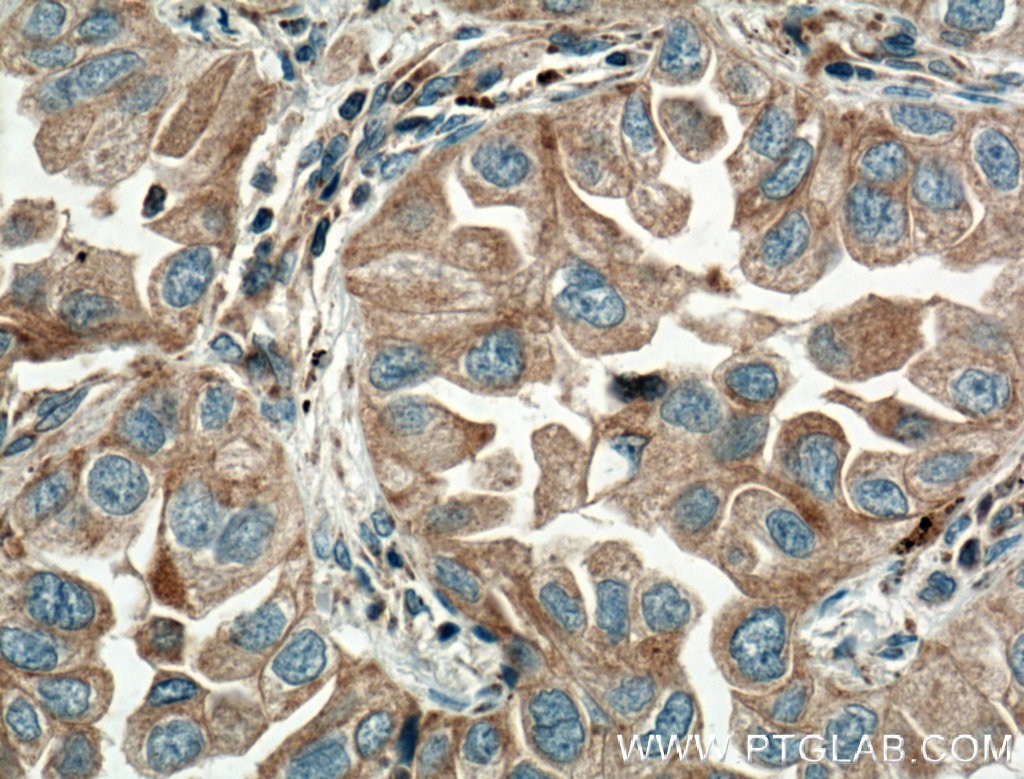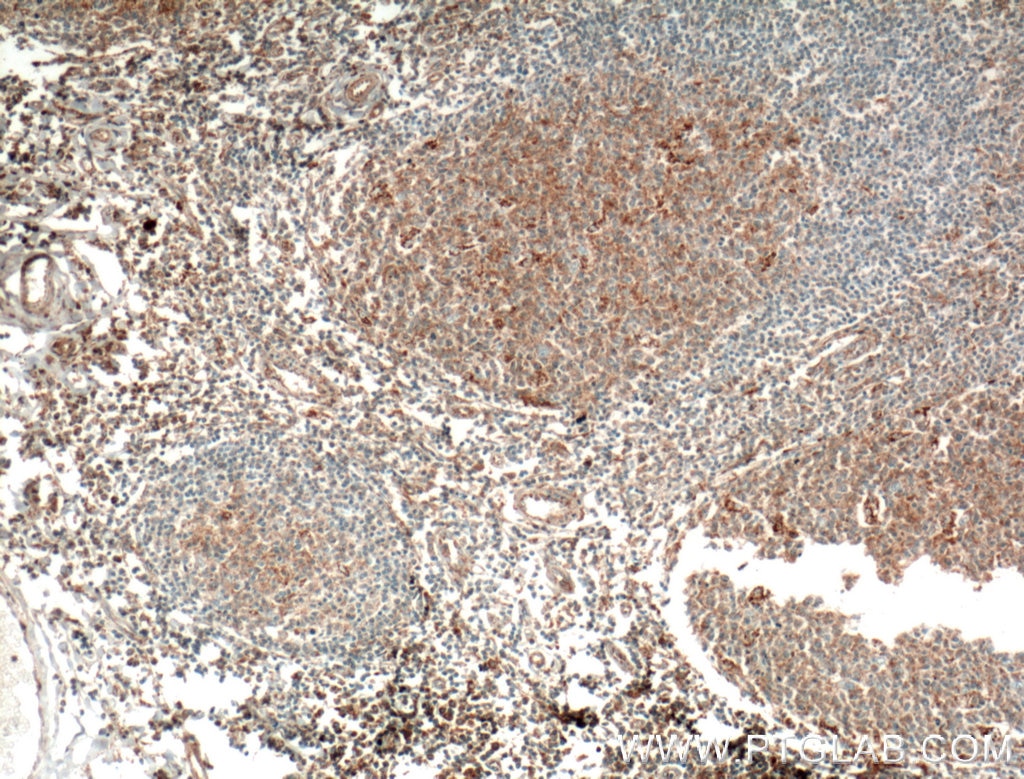Anticorps Polyclonal de lapin anti-Eotaxin
Eotaxin Polyclonal Antibody for IHC, ELISA
Hôte / Isotype
Lapin / IgG
Réactivité testée
Humain et plus (2)
Applications
IHC, ELISA
Conjugaison
Non conjugué
N° de cat : 11786-1-AP
Synonymes
Galerie de données de validation
Applications testées
| Résultats positifs en IHC | tissu de cancer du poumon humain, tissu d'amygdalite humain il est suggéré de démasquer l'antigène avec un tampon de TE buffer pH 9.0; (*) À défaut, 'le démasquage de l'antigène peut être 'effectué avec un tampon citrate pH 6,0. |
Dilution recommandée
| Application | Dilution |
|---|---|
| Immunohistochimie (IHC) | IHC : 1:50-1:500 |
| It is recommended that this reagent should be titrated in each testing system to obtain optimal results. | |
| Sample-dependent, check data in validation data gallery | |
Applications publiées
| IHC | See 2 publications below |
Informations sur le produit
11786-1-AP cible Eotaxin dans les applications de IHC, ELISA et montre une réactivité avec des échantillons Humain
| Réactivité | Humain |
| Réactivité citée | rat, souris |
| Hôte / Isotype | Lapin / IgG |
| Clonalité | Polyclonal |
| Type | Anticorps |
| Immunogène | Eotaxin Protéine recombinante Ag2398 |
| Nom complet | chemokine (C-C motif) ligand 11 |
| Masse moléculaire calculée | 97 aa, 11 kDa |
| Numéro d’acquisition GenBank | BC017850 |
| Symbole du gène | CCL11/Eotaxin |
| Identification du gène (NCBI) | 6356 |
| Conjugaison | Non conjugué |
| Forme | Liquide |
| Méthode de purification | Purification par affinité contre l'antigène |
| Tampon de stockage | PBS avec azoture de sodium à 0,02 % et glycérol à 50 % pH 7,3 |
| Conditions de stockage | Stocker à -20°C. Stable pendant un an après l'expédition. L'aliquotage n'est pas nécessaire pour le stockage à -20oC Les 20ul contiennent 0,1% de BSA. |
Informations générales
CCL11 also named Eotaxin-1, was initially discovered as an eosinophil-specific chemoattractant. CCL11 plays a central role in both allergic and non-allergic inflammatory reactions by recruiting immune cells such as eosinophils,basophils and Th2 lymphocytes. CCL11 binds to the chemokine receptors CCR2, CCR3 and CCR5, with highest affinity to CCR3. High levels of CCL11 have been described in several chronic inflammatory diseases, such as allergic rhinitis, atopic dermatitis, asthma, gastrointestinal disease and rheumatoid arthritis.
Protocole
| Product Specific Protocols | |
|---|---|
| IHC protocol for Eotaxin antibody 11786-1-AP | Download protocol |
| Standard Protocols | |
|---|---|
| Click here to view our Standard Protocols |
Publications
| Species | Application | Title |
|---|---|---|
Am J Physiol Heart Circ Physiol Pygo1 regulates pathological cardiac hypertrophy via a β-catenin-dependent mechanism. | ||
Am J Rhinol Allergy Effects of Ursolic Acid on the Expression of Th1-Th2-related Cytokines in a Rat Model of Allergic Rhinitis After PM2.5 Exposure. |





